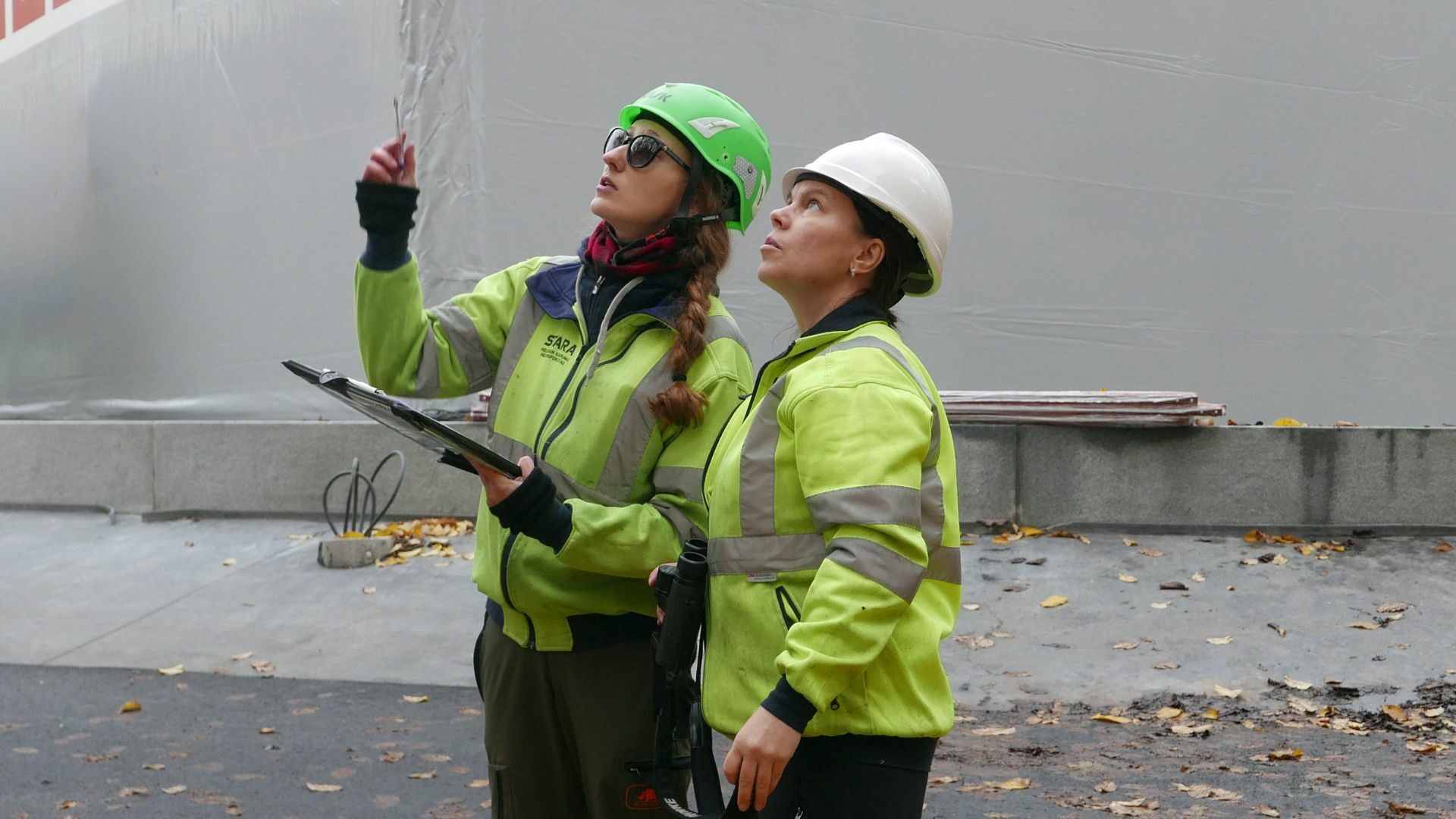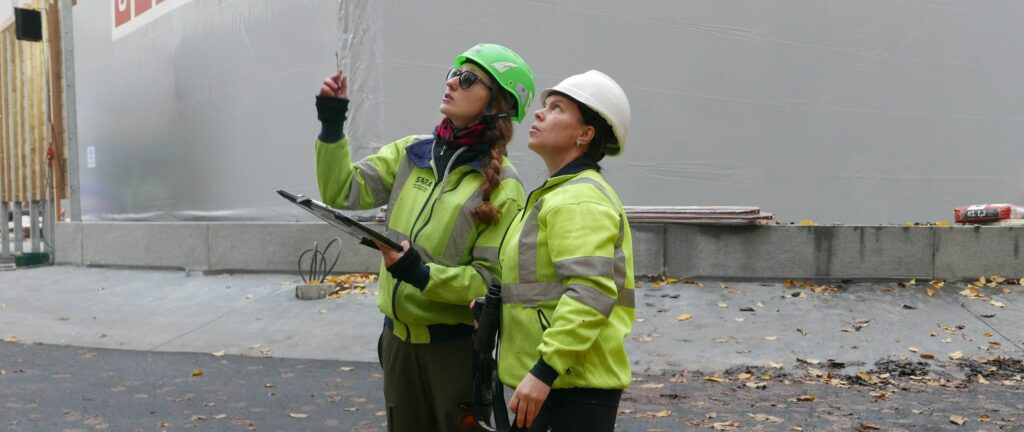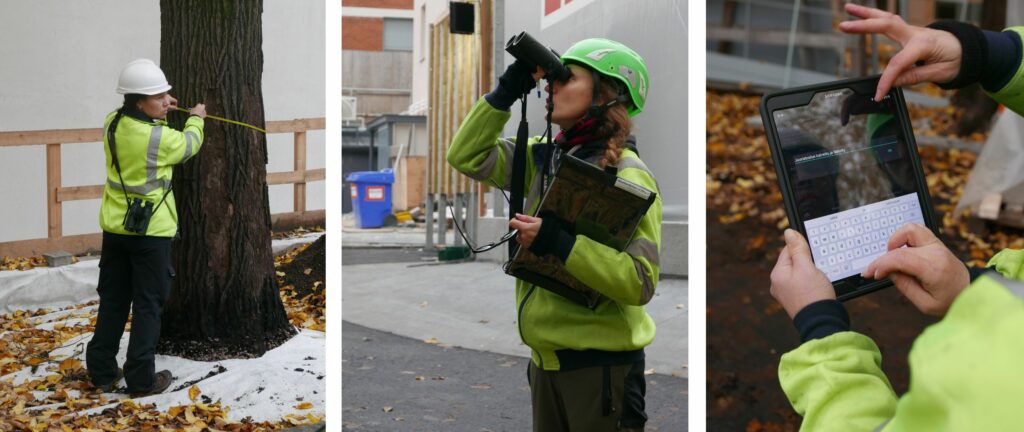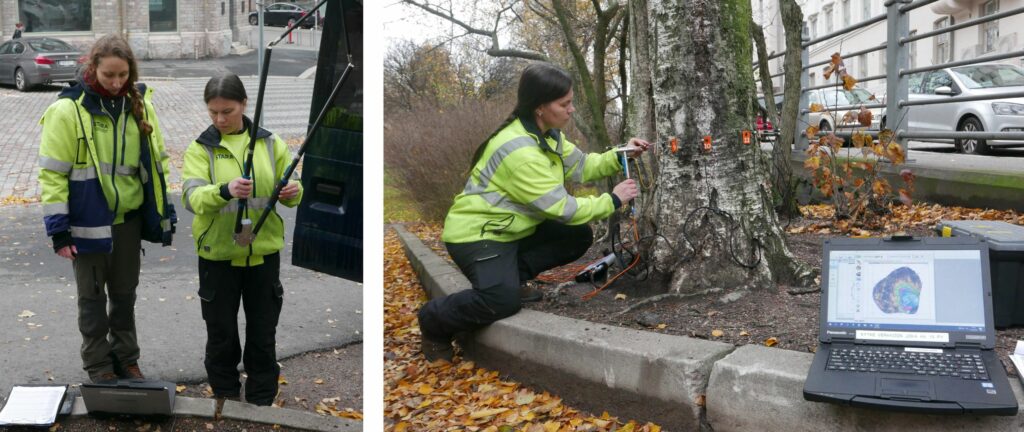
Stara arborists
The City of Helsinki utilizes Geometrix solutions for urban and park tree management both in the field and in the office. In this article, we will discuss the everyday fieldwork and the benefits of mobile data management.
If a tree is felled in a city, arborists and spatial information are on top of the situation
On one October morning, we followed the work of Stara’s arborists as they surveyed the condition of the trees.
A typical working day for arborists in the field consists of both surveying and maintenance work. Today, however, we are carrying out condition mapping using spatial data.

We wear safety vests and helmets, as our first site is located in the construction site area in Kruununhaka, Helsinki.
The arborists Maria Sutenius and Ly Kaipiainen are there to meet us. Despite the hustle and bustle surrounding the site, they begin a focused and careful survey.
First, Kaipiainen and Sutenius measure the circumference of the tree to obtain information about its growth. They then visually assess the condition of each specimen, for example, for diseases. Autumn is the perfect season for this, as the leaves do not block the view up to the canopy of these large trees. The observations are logged with a tablet in Mobilenote, where the location data links the records to the tree in question. For this round, the specimens assessed will receive a pass mark – with the exception of one, which unfortunately faces a decision for it to be felled.

Mobilenote is used, for example, to note the condition of a particular tree and draw up a management plan for it. The maintenance records show both past and future work, which makes it easier to plan the work. The arborists say that before the application was introduced, the data was first recorded in the field on a paper form and then transferred manually to a computer in the office.
With Mobilenote, information is transmitted in real time, reducing the need for additional manual data entry. Kaipiainen says that the ability to add photographs to support observations has been a useful feature in the work, as it gives a more complete picture of the situation at hand.
Data collection in arborists’ work is also varied, as we will see at the next site, Tove Jansson Park in Katajanokka. Some days, the work involves climbing trees, while others involve using a range of advanced technical measuring equipment.
Typically, the condition assessment is done visually, which means that the only remaining challenges involve what cannot be seen with the eye, such as root damage and the condition of the trunk.
From collected data to new maintenance plans
Kaipiainen takes out a measuring device that looks like a large harp and taps measurement marks into the trunk of the tree with a hammer. The computer software gives an accurate picture of the density and condition of the tree trunk. As he taps the measuring points, an almost hypnotic image begins to appear on Sutenius’ computer screen, colour-coding the condition of the trunk.
The estimate is further refined by a special tool whose blade, about a millimetre thick and 40 centimetres long, measures the resistance of the wood and thus gives a more accurate indication of the trunk’s structure by drawing a curve.

The visit is coming to an end, and it’s time to say goodbye to the arborists. Next, the arborists’ working day continues in the office, where the observations and management data collected will be used to plan future tasks.
The day has been interesting and educational in many ways, thanks to our wonderful guides.
Thank you to Stara arborists Maria Sutenius and Ly Kaipiainen, and Saija Asikainen for making the day possible.